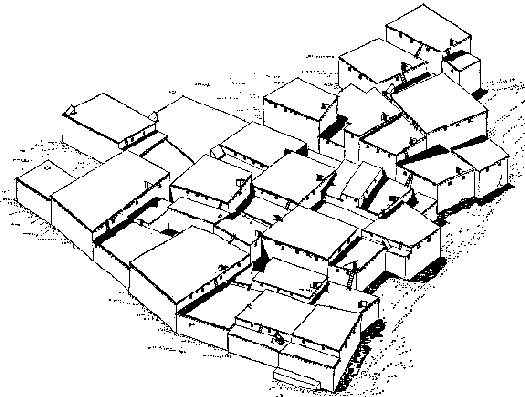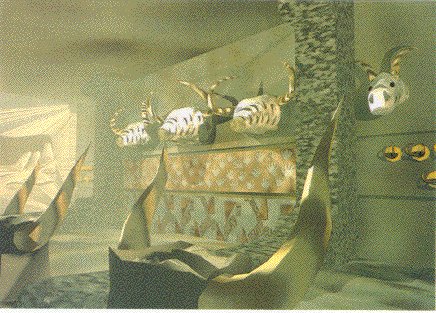
�The mound of Catal Huyuk located on the Anatolian plateau near modern Konya. One of the earliest settlements known to have made the transition from hunting-gathering to agrarian society developed here as early as 6500 BCE.
|
|
|

|
�The mound of Catal Huyuk located on the Anatolian plateau near modern Konya. One of the earliest settlements known to have made the transition from hunting-gathering to agrarian society developed here as early as 6500 BCE. |
 Artist's depiction of houses and other buildings from the Neolithic period |
|
|
 View of Hasan Dag, the volcanic mountain which produced obsidian for exports of the worked stone by the inhabitants of Catal Huyuk. An eruption of the mountain was depicted on the walls of a house in the Neolithic settlement. |
|
|
 |
 Hypothetical reconstrucion of shrine (link from Cambridge website) |
|
One of the most interesting artifacts uncovered in the excavations at Catal Huyuk was this image of a woman flanked by two animals (lionesses?), apparently pregnant and in the process of giving birth. Almost certainly a cult object, it may be interpretated as an early representation of the Earth Mother venerated throughout Neolithic Europe and the Middle East. It certainly typifies the fascination of the inhabitants of Catal Huyuk with the forces of nature and fertility as well as the special status accorded women because of their association with agriculture and reproduction. |
� |
�